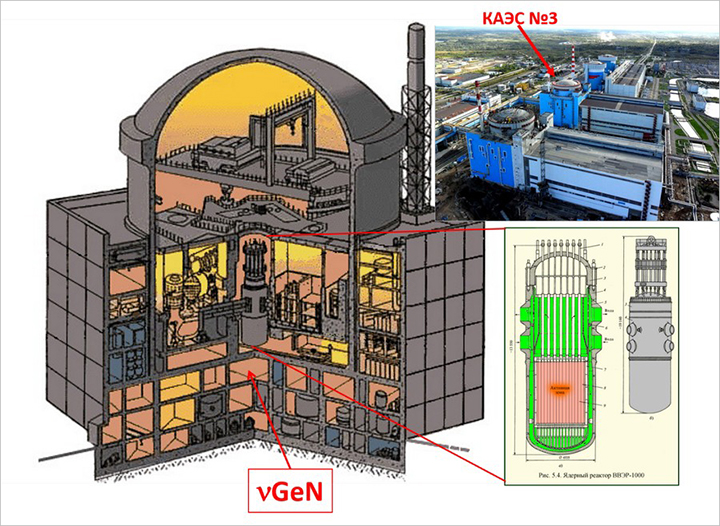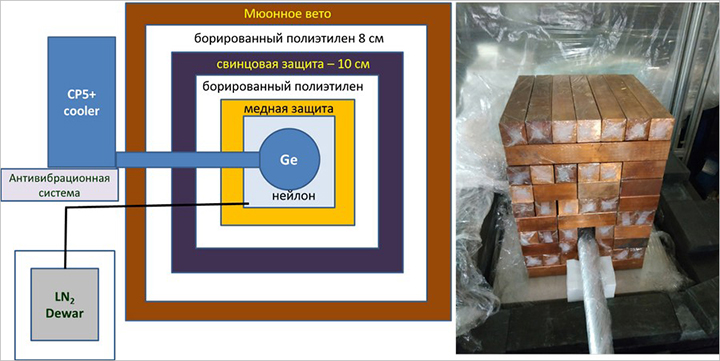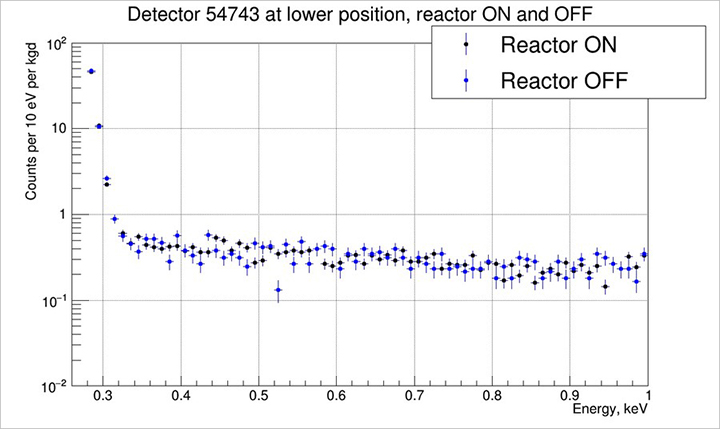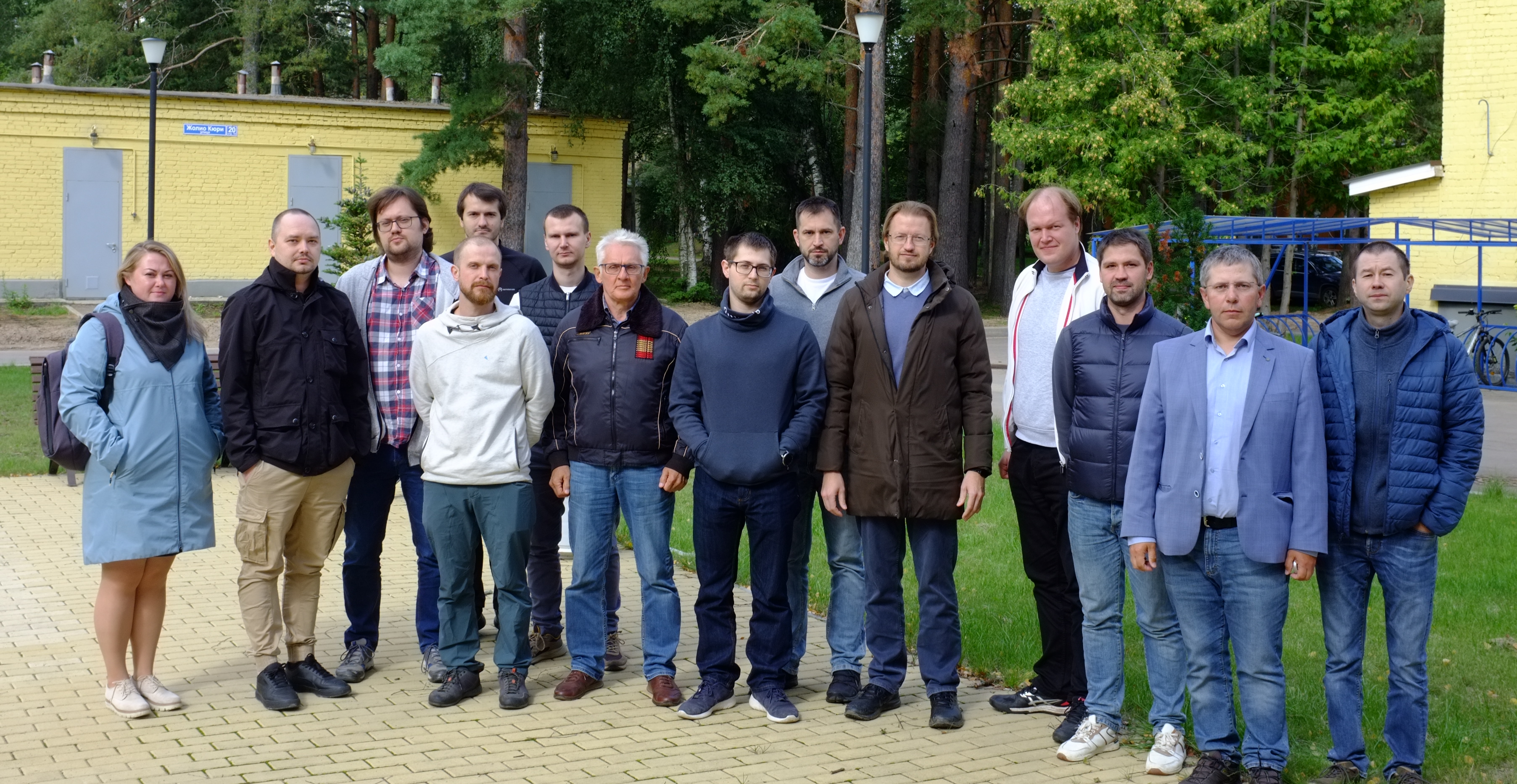DLNP JINR developed unique νGeN experimental facility to study reactor antineutrino properties
Media, 30 June 2023
The νGeN experimental setup developed by the scientists from the Dzhelepov Laboratory of Nuclear Problems JINR is operating at the Kalinin Nuclear Power Plant (KNPP). The experiment is aimed at the search for coherent elastic neutrino scattering, the neutrino magnetic moment and other rare processes using antineutrinos from a nuclear reactor. The detection of the neutrino magnetic moment in the experiment will provide evidence of New Physics beyond the Standard Model and indicate the Majorana nature of neutrino mass. The detection of the coherent neutrino scattering will enable both fundamental research, such as the search for non-standard neutrino interactions, and practical applications of new knowledge, e.g., monitoring the operation of NPPs and controlling nonproliferation of nuclear weapons. Several experiments at nuclear reactors worldwide are focused on investigating coherent elastic neutrino scattering off atomic nuclei, however none of them has succeeded in reliably detecting this process so far.
Coherent elastic neutrino scattering off the atomic nucleus was predicted about 50 years ago within the Standard Model. At low energies (below 50 MeV), when elastically scattering off the nucleus, a neutrino can interact not with its single nucleons, but with the whole nucleus (coherently). The search for coherent elastic neutrino scattering in the region of complete coherence is performed at nuclear reactors yielding antineutrinos with energies below 10 MeV. The resulting recoil nucleus has an energy less than several keV. That is why, to discover this phenomenon, ultrasensitive detectors and a low level of the background are needed.
 Fig. 1. Layout of the experimental hall at KNPP
Fig. 1. Layout of the experimental hall at KNPP
The Kalinin Nuclear Power Plant is located about 300 km away from Dubna, in Udomlya, Tver Region. The νGeN experimental setup is placed beneath a 3.1 GWs reactor at a distance of about 11 meters from the centre of the reactor core. “Usually it is really hard to agree on placing the spectrometer close to the reactor core, but we managed to do this. This ensures a higher neutrino flux and a better level of signals than those of our competitors,” Head of Sector 1 of the Experimental Department of Nuclear Spectroscopy and Radiochemistry of the Dzhelepov Laboratory of Nuclear Problems Alexey Lubashevsky said.
Thanks to this position of the spectrometer, scientists have the possibility of using the antineutrino flux of ~ 5×1013 particles per square centimeter per second. The materials surrounding the reactor correspond to 50 meters of water equivalent and efficiently suppress cosmic background radiation.
 Fig. 2. Left: scheme of the νGeN shielding. Right: assembling the copper shielding
Fig. 2. Left: scheme of the νGeN shielding. Right: assembling the copper shielding
The events are detected with a special low threshold high-purity germanium detector. Multilayer shielding against ambient radiation surrounds the detector. In addition, a special equipment to reduce the impact of vibrations and noises is provided.
The first comparison of data collected with the reactor on and off (94.5 days and 47.1 days, respectively) did not reveal significant differences between spectra. This difference could indicate the observation of coherent neutrino scattering. The data analysis allowed the JINR team to set the limit on an important parameter of ionization loss in germanium at a level of k < 0.26.
 Fig. 3. Low-energy part of the experimental spectra taken with the reactor on and off
Fig. 3. Low-energy part of the experimental spectra taken with the reactor on and off
In 2022, a special device to lift the spectrometer closer to the reactor and operate a high neutrino flux was installed. The data taking system was upgraded, and the threshold of measurements was improved. Data collection is currently ongoing and new results are expected soon.
“In the future, we will be able to search for New Physics beyond the Standard Model, e.g., to search for non-standard neutrino interactions and other phenomena. Such studies do not only bring results of a fundamental nature. If the process is reliably detectable, we will be able to directly control the nuclear reactor power with a rather compact detector,” Alexey Lubashevsky concluded.
 JINR research team involved in νGeN
JINR research team involved in νGeN
The paper “Development of the νGeN setup to study reactor antineutrino properties” won the 2022 JINR Prize within the competition of methodological and technological research works. The Prize was awarded to the DLNP JINR team: Vyacheslav Belov, Igor Zhitnikov, Sergey Kazartsev, Alexey Lubashevsky, Dmitry Medvedev, Dmitry Ponomarev, Sergey Rozov, Konstantin Shakhov, Egor Shevchik, and Evgeny Yakushev.
Publications:
- I. Alekseev et al., “First results of the νGeN experiment on coherent elastic neutrino-nucleus scattering”, Phys. Rev. D 106, L051101, (2022)